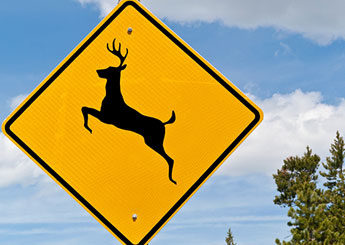Watch out for deer on the roads

Photo: Sue Smith/iStock/Thinkstock
Whether you drive for a living or merely commute to and from work, you need to be aware of deer. Deer are most active at dusk and dawn, but can venture onto roadways at any time of the day. Additionally, more than half of all deer-motor vehicle collisions occur in October and November, according to the Washington Department of Fish and Wildlife.
The department offers these driving tips to help prevent collisions:
- If you see one deer crossing a road, watch out for more. Deer often travel in groups and move fast to stay caught up with each other.
- If you see brake lights ahead of you, it could be because the driver has spotted a deer. Stay watchful as you drive through the area, as more deer could try to cross.
- Take note of deer-crossing signs and drive accordingly.
- Drive more slowly at night, giving yourself time to see a deer with your headlights. Lowering the brightness of your lights will make it easier to see deer.
- Be especially watchful when traveling near steep roadside banks. Deer can appear on the roadway with little or no warning.
- Be aware that headlights confuse deer and may cause them to move erratically or stop.
- If you accidentally hit and kill a deer, report the location of the deer’s body to the city, county or state highway department that has jurisdiction over the road.
Post a comment to this article
Safety+Health welcomes comments that promote respectful dialogue. Please stay on topic. Comments that contain personal attacks, profanity or abusive language – or those aggressively promoting products or services – will be removed. We reserve the right to determine which comments violate our comment policy. (Anonymous comments are welcome; merely skip the “name” field in the comment box. An email address is required but will not be included with your comment.)

